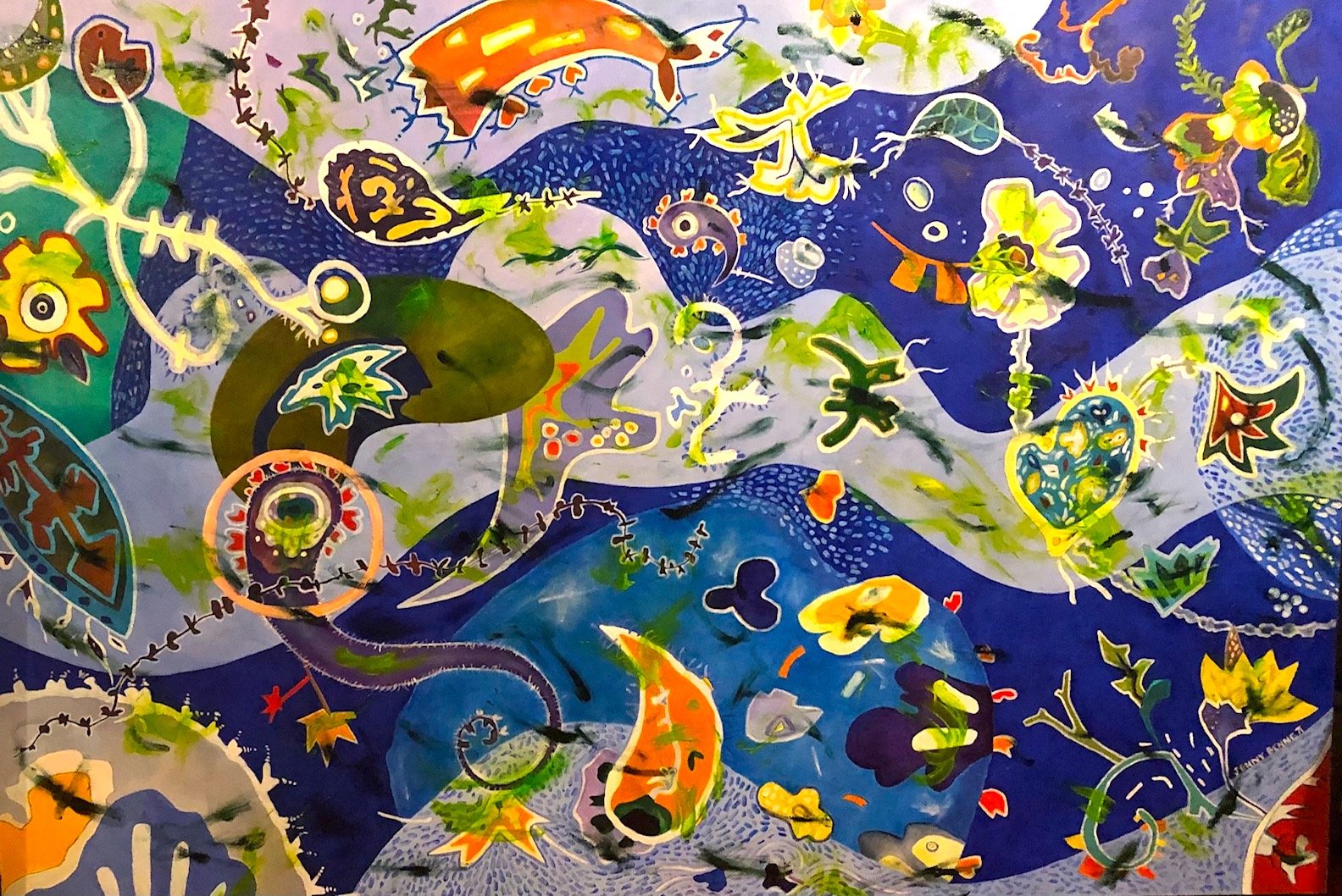Interview with Jenny Bennett
With your background in anthropology, how do you see your art as an anthropological study of human culture and experience? In what ways do you philosophically interpret your role as both an artist and an anthropologist in exploring and documenting the human condition?
Recent developments in DNA science have enabled giant steps in the journey of discovery of our origins; as both individuals and tribal members. Haploid groups are divisions of peoples based determined by mutations occurring over time as humans spread over the the globe. Females can trace back through their mothers line. This is made difficult traditionally as names are generally not passed down as men's are. As a non indigenous New Zealander I am aware that before my people came here they had their roots somewhere else and apart from a few family stories we knew next to nothing. My ongoing research into genealogy using DNA tools has changed this.
The Paisley series evolved from floral works I made and also from a childhood fascination with a paisley patterned eiderdown I had. Some of my Scottish ancestors came from Paisley. The Paisley patterns came from India when cotton printing began in factories. There were links with the Middle East and the Persian Moguls. The Scottish settlers who came to New Zealand brought with them beautiful shawls featuring these same patterns.
Your work navigates the intricate balance between freedom and control, conscious decision-making and intuition. How do you philosophically reconcile this interplay in your art, and what does this reveal about your views on the nature of human existence and our capacity for creativity?
When I begin a work, I usually establish what it's about;- i.e the basics of line and form are blocked in, sometimes over a monocoat of colour, or if I want a really pure light colour to be present in the finished work I will apply this directly on to a white base. As the work progresses I often lose control and direction in some parts and although this can be difficult to work through and resolve, it is where the creativity sets in and the original vision may evolve. When I am in 'the zone' I am not making conscious decisions, I just seem to know what to do.
The final part is completion and this involves stepping back and engaging a critical eye, to evaluate, correct, amend, delete, emphasise...... tweaking on a micro level. I know when a work is finished when it 'clicks' together and nothing annoys me. So, the process involves both conscious decision making and intuition and letting go. This process can be used in many other areas of human life. Logic and science go hand in hand with creativity to problem solve.
You refer to art as providing the ‘anti toxins’ necessary for living. In a philosophical context, how do you perceive the role of art in confronting existential malaise and the human condition? Can art serve as a form of existential therapy, and if so, how?
Although Art Therapy is a recognised field of healing, it is not my goal as an artist to heal people. I came across the concept of art as an 'anti-toxin' while reading the works of Anais Nin, some decades ago when it really resonated with me. She saw the artist as a "Magician" and she defined an' artist' broadly, as 'whoever has a creative will - whoever creates anything, a garden, a child, or a friendship, a life'. She considered the antitoxins which art produces can neutralise the hassles and trials of every day life or 'the existential malaise'. Art as a non verbal language can evoke feelings, innate desires and transformative insights. It is also a means of communication. "To paint is to love again."
Your series "Hot Flotsam" delves into themes of global warming and pollution through abstraction. How do you philosophically approach the challenge of representing complex, often intangible environmental issues in abstract forms, and what do you hope to evoke in your audience through this method?
This work was made over a period of four years and in 4 stages. It has elements and personal icons from previous Floral and Paisley series which I have combined to create a 'river of life'. Mankind, through the use of technology has produced negative cultural debris; plastic rubbish, high carbon emissions, chemical pollution and general environmental degradation of land air and sea. Global warming is here. I have used various techniques to express and communicate my concerns and to portray these issues; layering, varnishing, the use of hot and warm colours - reds, oranges, yellows; all swept along against a backdrop of deep blue. There is a sense of clutter, and sadly, inevitability too.











